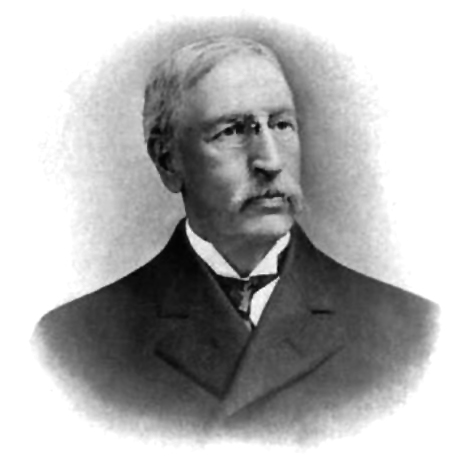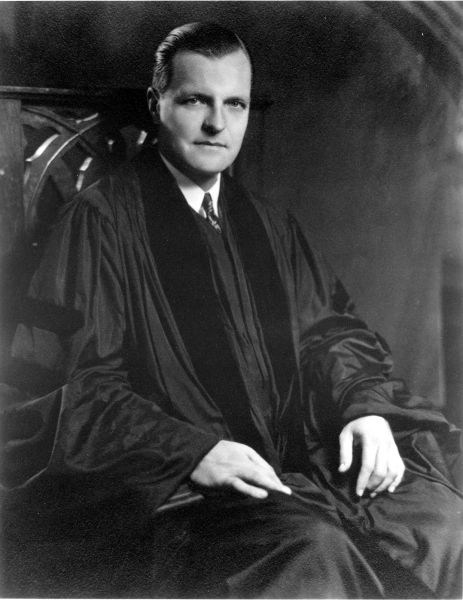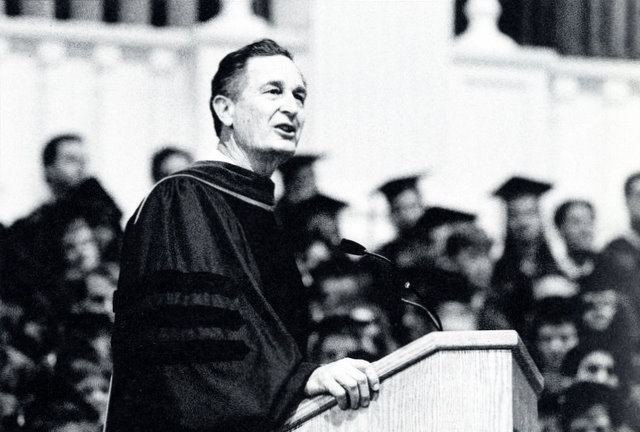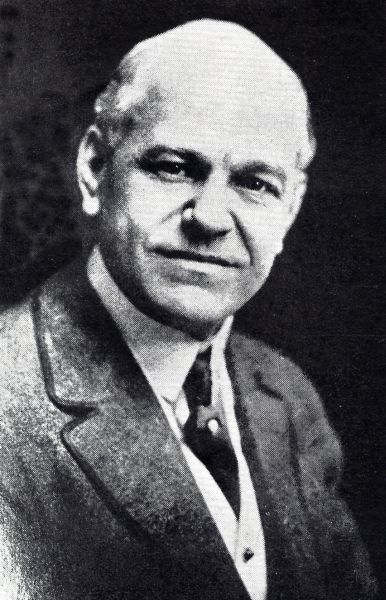 The Omaha Gospel Tabernacle was founded in 1921 by Dr. R.R. Brown of the Christian and Missionary Alliance. Two years later Brown started Radio Chapel Service, broadcasting the first nondenominational services, and during the early 1930s it attracted a weekly national audience of more than 500,000. The broadcast continued for the next 53 years, achieving the distinction as the longest continuous radio program. In 1938 Brown was a keynote speaker for the Christian and Missionary Alliance, which had previously convened for 13 consecutive years on the campus of Wheaton College. On Sunday he typically preached at the Tabernacle, the Bible Church and College Church. His sermon, “Living the Creative Life,” is taken from Not By Bread Alone (1940), a collection of Wheaton College chapel addresses (all delivered in Pierce Memorial Chapel, seen above) edited by Carl F. H. Henry:
The Omaha Gospel Tabernacle was founded in 1921 by Dr. R.R. Brown of the Christian and Missionary Alliance. Two years later Brown started Radio Chapel Service, broadcasting the first nondenominational services, and during the early 1930s it attracted a weekly national audience of more than 500,000. The broadcast continued for the next 53 years, achieving the distinction as the longest continuous radio program. In 1938 Brown was a keynote speaker for the Christian and Missionary Alliance, which had previously convened for 13 consecutive years on the campus of Wheaton College. On Sunday he typically preached at the Tabernacle, the Bible Church and College Church. His sermon, “Living the Creative Life,” is taken from Not By Bread Alone (1940), a collection of Wheaton College chapel addresses (all delivered in Pierce Memorial Chapel, seen above) edited by Carl F. H. Henry:
In considering matter of creative living, let us turn to the Second Book of Kings, the second chapter. There we have the words of Elijah to Elisha, What shall I give to you? And the response is, “I Would that a double portion of Thy Spirit be upon me.” There is in these words a gripping concern over the course of living that Elisha should pursue. Every man lives either creatively or corruptly. The highest, the most noble ambition in the world today is to live creatively; not to inspire a man to be the best ball player in the world, the best student, the best musician or the finest artist, but to install a personal and vital relationship to the one great Redeemer and the gospel purpose. The world knows no higher and no more noble ambition than that motivating an individual who lives so that he will persuade men and women to come to know God as He is in Jesus Christ, the foundation of all character and all security in a mans life. I saw a young man get up the other night before a church audience. He had a fine message, but he gave the audience the idea that he thought he was a fine preacher. The young people commented, “Wonderful oratory!” You are not going out to preach, but you are going out to tell someone something. If you are dedicating your life to missionary service for Christ, the highest ambition is to make men and women come to know God as He is revealed in Christ, to know Him not only as a Savior, but also in all the fulness and revelation of His power. The Bible is the unfolding of the person and work of Jesus Christ, and as I increase in the knowledge of the Book, I increase in the knowledge of Jesus. The youth of this generation need to be told how to be more than a success. Before we can effectively present Christ, the foundation of character and security, we need to learn how to make men and women know God. It is not sufficient merely to give information about Christ; we need also that creative impulse that make us not only articulate Him but also lead others creatively to the knowledge of Him. There are many in our day who have a superficial method of expressing their spirituality. People get the idea that when one becomes spiritual, he must assume a superficial attitude. There was none of this in Elisha. Elisha followed Elijah, who said, “Ask what I shall do for thee, before I be taken away from thee.” And Elisha said, “I pray thee, let a double portion of thy spirit be upon me.” Elijah’s mantle fell; Elisha picked it up, remembering the words, If thou see me when I am taken from thee, it shall be so unto thee, but if not, it shall not be so. When the mantle fell and Elijah disappeared, Elisha turned right around to express his faith. He struck the waters of the Jordan and crossed over. He had to go to the other side of Jordan. The place of creativeness is the other side of Jordan, the other side of Calvary. Surrender your life to His fullness. Jesus is our Elijah. He went through to the other side of Calvary. He told them to tarry, to wait, for He would drop His mantle. The Holy Spirit came. You can walk, live, think, and act in the power of that Spirit.
















 Dr. J. Richard Chase
Dr. J. Richard Chase